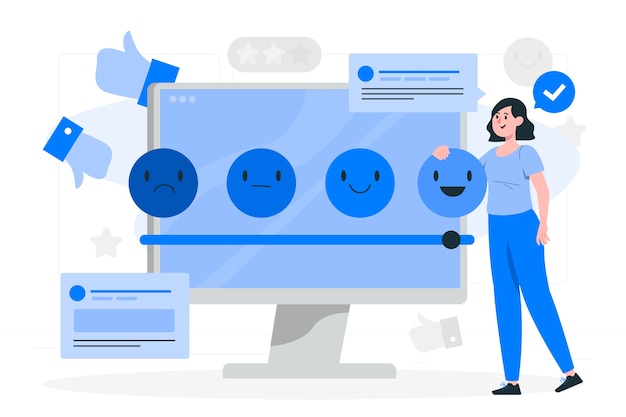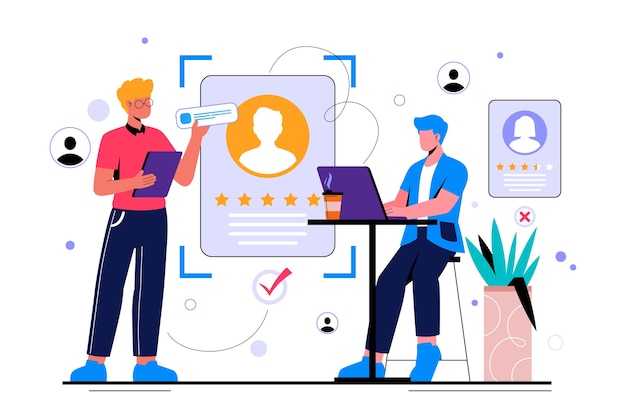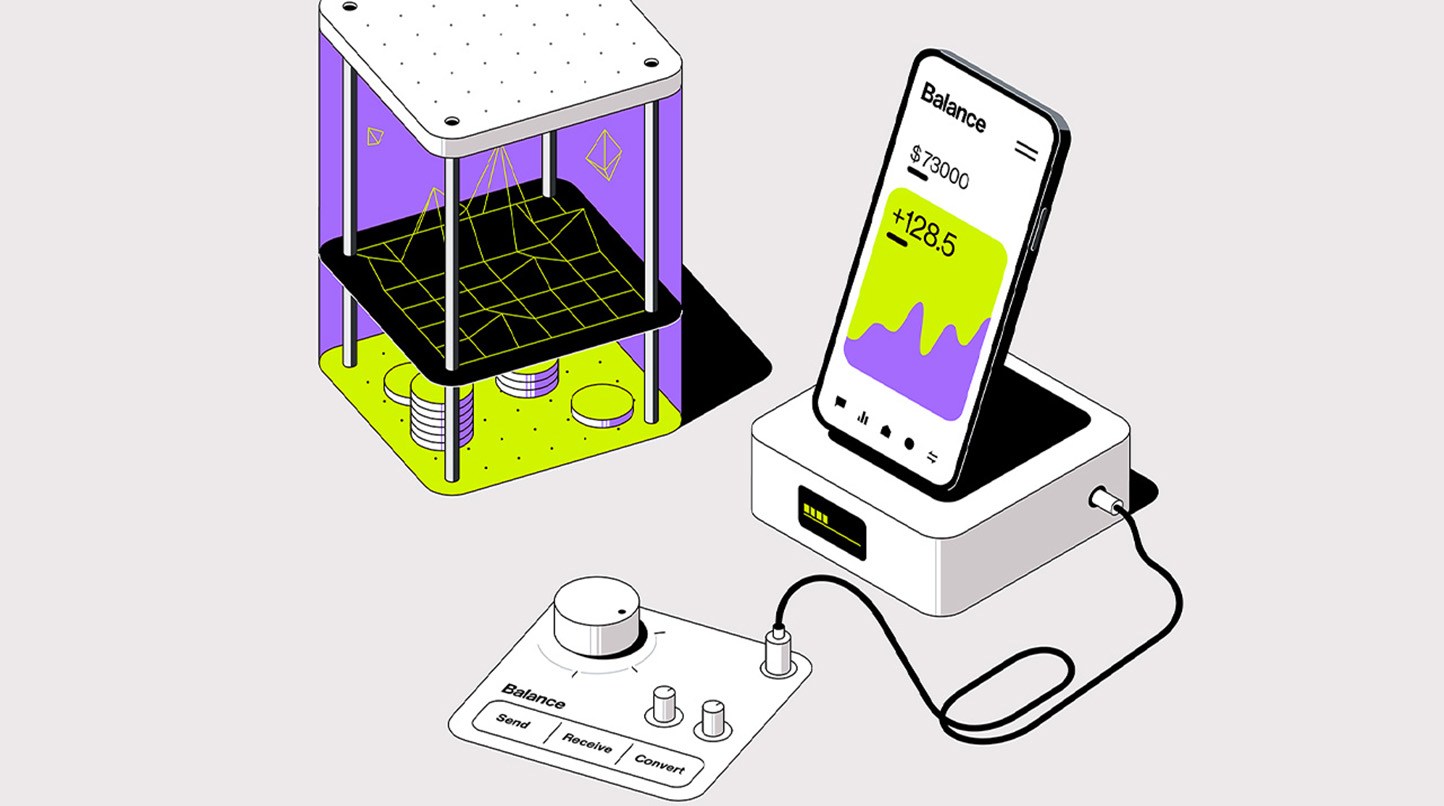Imagine this: Your B2B case study videos are so good, your sales team complains they're putting them out of a job! Sounds far-fetched? Not anymore. This in-depth exploration unveils the strategies to transform your videos into lead-generating powerhouses, boosting conversions and deepening customer relationships.
We'll navigate the intricacies of the B2B buyer journey, mastering the art of addressing customer pain points and showcasing measurable results through compelling storytelling and impactful visuals. Get ready to elevate your content with pre-production planning, optimization for search and social media, and leveraging techniques like animation and professional voiceover for a truly persuasive experience.
The B2B Buyer's Journey

Understanding the intricacies of the B2B buyer journey is crucial for crafting compelling case study videos. Unlike B2C, B2B decision-making involves multiple stakeholders, longer sales cycles, and a focus on rational justification.
Things to Plan:
- Identify key stakeholders involved in your target audience's purchasing decisions.
- Map out the different stages of the B2B sales funnel and consider the content needed for each stage.
- Tailor video content to address the specific concerns and information needs at each stage of the journey.
Why Case Studies Matter

B2B case studies, especially in video format, serve as powerful tools for building trust and credibility. They provide concrete examples of how your products or services have delivered real-world value for other businesses.
Things to Plan:
- Identify customer success stories with measurable outcomes relevant to your target audience.
- Highlight customer pain points and how your solution addressed them effectively.
- Focus on building an emotional connection with the viewer by showcasing relatable B2B use cases.
Beyond Text-Based Case Studies
Traditional, text-based case studies can be informative, but they often fail to fully engage potential clients. B2B case study videos elevate storytelling, utilizing visuals, testimonials, and emotional cues for greater impact.
Things to Plan:
- Evaluate existing case study materials for their suitability for video adaptation.
- Identify opportunities to enhance narrative elements through visuals, animation, or music.
- Consider different video styles for each case study (e.g., testimonial-driven, explainer style).
Video's Impact on Engagement

In a crowded digital landscape, video has emerged as a powerful medium for capturing and maintaining viewer attention. B2B case study videos excel at delivering complex information concisely and engagingly, compared to written formats.
Things to Plan:
- Craft compelling video introductions and use visuals to keep viewers engaged.
- Use animation and graphics to illustrate technical concepts clearly.
- Employ effective editing techniques to ensure pacing is dynamic and holds attention.
Case Study Videos as Social Proof
Potential B2B clients crave validation and seek evidence that your offerings deliver results. Case study videos, featuring authentic customer testimonials, are powerful social proof assets that influence purchasing decisions.
Things to Plan:
- Identify clients willing to provide testimonials for their case study videos.
- Capture authentic and compelling stories of customer success.
- Highlight tangible results and data points to enhance the video's impact as social proof marketing.
Boosting Conversion Rates with Videos
Including case study videos within your sales funnel can have a significant positive impact on conversion rates. Demonstrating real-world success can build trust and help address concerns throughout the B2B buyer journey.
Things to Plan:
- Strategically integrate case study videos on your website, landing pages, and in email campaigns.
- Use videos to overcome potential objections or hesitation towards your offerings.
- Track conversion rates and measure the impact of B2B case study videos on lead nurturing and sales.
Customer Journey Mapping
In the realm of B2B case study videos, understanding the customer's journey is crucial for crafting compelling narratives. Customer journey mapping allows you to visualize the various stages a customer goes through, from initial awareness to becoming a loyal advocate.
Mapping the customer journey provides a framework for your B2B case study video narrative. It helps identify key touchpoints and pain points that your solution addresses, ensuring a resonant and impactful message.
Things to Plan:
- Identify the different stages in your target customer's buying process.
- Pinpoint the key challenges and pain points they experience at each stage.
- Highlight how your solution addresses these challenges and guides customers towards success.
Highlighting Customer Pain Points

By directly addressing customer pain points in your B2B case study video, you establish credibility and empathy. Clearly demonstrating how your solution solves real-world problems resonates strongly with potential buyers.
Deep Dive Points:
- Begin by clearly articulating the customer's initial challenges and their impact on their business.
- Use visuals, data, and testimonials to emphasize the severity of the problems.
- Showcase how your solution effectively mitigates these pain points, using quantifiable results whenever possible.
- Transition seamlessly to presenting the positive outcomes achieved after implementing your solution.
Addressing Customer Objections
Proactively addressing potential customer objections builds trust and strengthens the credibility of your B2B case study video. By tackling common concerns head-on, you reduce viewer skepticism and increase the persuasiveness of your message.
Deep Dive Points:
- Identify common objections or hesitations that potential customers might have about your solution.
- Choose a case study customer who faced similar reservations initially.
- Show how the customer successfully overcame their objections through their experience with your product or service.
- Include clear evidence and testimonials that back up the claims and dispel any remaining doubts.
Showcasing Measurable Results:
Data speaks louder than words, especially in the B2B landscape. Demonstrating tangible, measurable results is a key element of a persuasive case study video. Quantifiable achievements provide irrefutable proof of your solution's effectiveness.
Presenting quantifiable results adds objectivity and strengthens your B2B use case. Concrete data helps decision-makers understand the value proposition in practical terms and justify their investment.
Things to Plan:
- Establish clear Key Performance Indicators (KPIs) relevant to the customer's objectives.
- Collect and organize data that demonstrates improvement in those KPIs.
- Present data visually through charts, graphs, and on-screen text for increased clarity.
- Connect the achieved results directly to the customer's overall business goals.
Long-Term Customer Success

A successful B2B case study video doesn't end with the initial solution implementation. Demonstrating long-term customer success highlights the lasting impact of your product or service and fosters trust.
Deep Dive Points:
- Show how the customer continues to benefit from your solution over time.
- Present data that showcases sustained improvements or growth over an extended period.
- Highlight how your solution adapts to changing business needs and supports long-term customer goals.
- Consider showcasing testimonials that emphasize the customer's ongoing satisfaction and commitment to your solution.
Customer Advocacy and Referrals
Customer advocacy serves as powerful social proof in the B2B space. When a satisfied customer willingly recommends your solution, it significantly amplifies your message's credibility and reach.
Featuring customer advocacy elements in your B2B case study video reinforces your claims and builds a sense of trust.
Things to Plan:
- Choose case study customers who are enthusiastic about their experience.
- Encourage genuine testimonials that express their willingness to recommend your solution.
- Capture footage of customer events, webinars, or speaking engagements that demonstrate their advocacy.
- Consider integrating short clips of customer reviews or quotes from social media.
ROI Calculations and Financial Benefits
Demonstrating tangible ROI is critical for B2B audiences. Quantifying the financial benefits of your solution builds credibility and allows prospects to visualize a clear return on their investment.
Things to Plan:
- Identify key metrics for ROI: Determine relevant KPIs like increased sales, reduced costs, or improved efficiency, specifically measured in your B2B case study video.
- Gather data from your customer: Work with your customer to gather specific data points that showcase financial impact.
- Present data visually: Utilize charts, graphs, or animations to present ROI calculations clearly within the video.
- Use real numbers and concrete examples: Showcase specific financial gains or savings achieved by the customer.
Operational Efficiency Improvements
Efficiency improvements resonate deeply with B2B decision-makers, particularly in operations-intensive industries. Highlighting these aspects emphasizes the value your solution can deliver in optimizing processes.
Things to Plan:
- Identify key processes that have been impacted: Pinpoint specific operational areas that have improved because of your solution (e.g., order fulfillment, manufacturing, communication) for specific B2B use cases.
- Collect metrics related to time-saving or increased throughput: Quantify the improvement (e.g., ""Reduced lead times by 20%"") and demonstrate impact.
- Use screen recordings or demonstrations: Show the 'before and after' state visually to highlight efficiency gains, and make these demonstrable within your B2B case study.
Competitive Advantage Gains
For many B2B companies, establishing or extending a competitive edge is a major business goal. Highlighting how your solution achieves this strengthens your value proposition.
Things to Plan:
- Determine specific competitive advantages gained: Analyze how your solution impacted factors like market share, speed-to-market, customer retention, etc.
- Use customer testimonials to back up claims: Capture direct customer feedback on how your solution aided in enhancing their market standing, for strong social proof in B2B marketing.
- Include market analysis or data points for context: Use external data (if available) to validate competitive advantage claims, presented visually for easy consumption by B2B decision-makers.
Industry-Specific Challenges and Solutions
Tailoring your message to resonate with specific industry needs demonstrates understanding and deepens connection with niche audiences. It shows how your solutions address industry pain points.
Things to Plan:
- Research common industry challenges: Before shooting the video, conduct thorough research to identify prevalent issues within your target sector, using these issues to build specific B2B use cases.
- Highlight how your solution addressed specific challenges: Focus on issues particularly relevant to that industry. Tailor examples within the B2B case study to showcase effectiveness in tackling these specific pain points.
- Use language and terminology relevant to that sector: This establishes credibility and fosters a sense of trust and expertise for your B2B audience.
- Consider multiple B2B case studies: Develop specific videos to target distinct industries if your solutions cater to a broad range of sectors.
Highlighting Specific Benefits and Value Propositions
B2B audiences make decisions based on perceived value. Clearly outlining the unique benefits and how they translate to business value is vital.
Things to Plan:
- Identify key features that translate into clear benefits: Focus on functionalities or aspects of your solution that offer practical advantages to your customers.
- Communicate the 'What's in it for Me?' aspect clearly: Explicitly demonstrate how these features translate to tangible benefits for B2B clients.
- Use customer stories to showcase realized benefits: Back up claimed benefits with real-world customer stories of success using specific use cases for maximum impact in your B2B case study video.
- Structure your narrative around these benefits: Instead of merely listing features, craft a story where the value proposition shines through tangible examples from B2B case study data.
Defining Your Target Audience

In the B2B world, creating compelling video case studies hinges on laser-focused targeting. By understanding your ideal customer, their pain points, and what resonates with them, you can tailor the messaging, visuals, and tone of your video for maximum impact. Generic videos often fail to engage, making targeted content crucial for grabbing and retaining attention in a competitive marketplace.
Things to Plan:
- Identify key buyer personas: Determine who makes purchase decisions, their job titles, their industry, and their individual needs.
- Conduct market research: Use surveys, customer data, and industry analysis to understand your target audience’s preferences.
- Analyze successful B2B campaigns: Look at videos from your competitors or leaders in your industry to see what elements resonate with your audience.
Crafting a Strong Narrative Structure
Successful B2B case study videos need a compelling narrative structure. This structure provides clarity and engagement by outlining a relatable problem, highlighting how your solution addressed the problem, and culminating in showcasing positive results. Frameworks like problem-solution-results or hero’s journey provide an intuitive flow that helps viewers understand and connect with the use cases you present.
Things to Plan:
- Determine the problem: What business challenge does the case study address?
- Identify the hero: Who experienced the challenge and used your solution (the customer)?
- Establish the solution: Showcase your B2B product or service as the solution to the problem.
- Highlight the resolution: Present the positive outcome of implementing your solution (tangible data and impactful results).
- Conclude with a call to action: Encourage viewer engagement with a clear next step.
Incorporating Customer Testimonials
In the B2B buying process, trust is paramount. Customer testimonials are a form of social proof that offer firsthand accounts of your product/service success, increasing credibility and boosting your B2B brand reputation. Real human experiences resonate far more powerfully than simply listing features or benefits.
Things to Plan:
- Choose diverse testimonials: Include various client backgrounds, company sizes, and industry experiences.
- Authentic delivery is key: Authentic testimonials are the most believable. Avoid scripting and coach clients to speak naturally about their positive experience.
- Blend customer soundbites with case study footage: Interweave testimonials into your video's narrative for added impact.
Animation and Graphics for Complex Concepts

Technical details of B2B solutions can be challenging to communicate effectively in video. Animation and graphics serve as excellent visual aids to simplify intricate topics. Through these elements, your video can clarify and amplify complex information, resulting in a clearer understanding and a more engaging viewing experience for B2B decision-makers.
Things to Plan:
- Prioritize comprehension over visuals: Animations should visually clarify the concept.
- Employ concise and easy-to-follow animations: Overly complex graphics can confuse viewers.
- Incorporate data and numbers: Animated charts and graphs can bring statistics to life.
- Choose appropriate styles and colors: Maintain consistent brand guidelines in animation design.
Using Screen Captures for Software Demonstrations
For B2B SaaS products, demonstrating their real-world value is essential. Instead of just explaining how your software works, use screen captures to create a step-by-step visual tutorial. Viewers witness its functionalities directly, understanding the interface and grasping its use cases. This immersive experience significantly improves understanding and strengthens customer buy-in.
Things to Plan:
- Simulate real-world scenarios: Show the user journey in realistic contexts relevant to potential clients.
- Provide clear step-by-step instructions: Narrate the screen actions with a professional voiceover or on-screen text annotations.
- Keep demonstrations concise: Edit your video to ensure fast-paced and efficient tutorials.
Professional Voiceover and Music
In video, audio plays a critical role in viewer engagement. High-quality professional voiceover ensures the message is communicated clearly and professionally, helping convey the trustworthiness and value of your B2B solution. Well-chosen background music establishes mood, setting a suitable tone for your case study video. This creates an environment where information is presented persuasively and powerfully.
Things to Plan:
- Find the right voice talent: Consider the target audience and message when selecting a voice artist.
- Compose music tracks relevant to brand image: Match music with tone and message – upbeat for innovation, more contemplative for technical solutions.
Branding Consistency and Call to Action
Effective B2B case study videos incorporate branding elements to maximize impact. Maintaining visual consistency aligns the case study video with broader B2B branding strategy, reinforces recognition, and strengthens company identity. A strong call to action empowers viewer response. Informing them about the desired action – such as website visits, contact information collection, or demo bookings - guides them toward desired business conversions and provides quantifiable ROI from your case study investment.
Things to Plan:
- Maintain brand guidelines throughout the video: Colors, logos, fonts, graphics style must align with brand style guides.
- Clear and concise Call-to-Action (CTA): Place it strategically at the video's beginning and/or end to reinforce message.
- CTA examples include visiting websites, requesting demonstrations, downloading white papers, or registering for webinars.
Explainer Video Style for Product/Service Overview
B2B explainer videos focusing on case studies offer a concise and engaging way to demonstrate the value proposition of a complex product or service by showcasing real-world B2B use cases. Unlike traditional product demos, they connect emotionally by illustrating how your solution has helped other businesses overcome challenges, thereby building strong social proof.
Things to Plan:
- Identify the key pain points addressed by your product/service.
- Select a diverse range of B2B case studies that highlight successful outcomes across different industries or applications.
- Utilize a mix of storytelling and animation to keep the video dynamic and easily digestible.
- Integrate strong calls-to-action encouraging viewers to learn more or schedule a demo.
Testimonial-Focused Videos for Specific Features
Individual testimonials pack a powerful punch of credibility and social proof when promoting B2B products or services. These videos humanize your brand and demonstrate your solution's practical value through firsthand accounts from satisfied customers. Focusing on specific features through targeted testimonials provides tangible evidence of how your offering excels in particular areas, fostering B2B buyer confidence.
Things to Plan:
- Identify the key features or benefits you want to highlight.
- Select customers who have experienced positive outcomes directly related to these features.
- Prepare detailed interview questions to elicit specific insights and stories from your customers.
- Edit the testimonial snippets strategically to maintain viewer engagement and deliver a compelling narrative.
Mini-Case Studies for Social Media Snippets

With the increasingly short attention spans of online audiences, bite-sized B2B video content is crucial. B2B mini case studies effectively deliver condensed narratives showcasing successful customer stories through social media platforms like LinkedIn, Twitter, and Facebook. These easily digestible snippets pique the curiosity of potential clients and create awareness for your business' use cases through authentic social proof, leading to deeper engagement.
Things to Plan:
- Identify the key takeaways and impactful results from a specific case study.
- Condense the narrative to its core elements within a short timeframe (e.g., 60 seconds or less).
- Use dynamic visuals and eye-catching captions to maximize engagement on social platforms.
- Include strong calls-to-action within the video and accompanying captions, driving traffic to a detailed case study or landing page.
- Consider repurposing long-form B2B case study videos by creating social media-optimized segments.
Choosing the Right Customer for a Case Study
A powerful B2B case study video relies heavily on the customer chosen. Selecting a customer who embodies your target audience and experienced significant success with your product/service is crucial. Enthusiastic customers who can articulate the impact clearly become strong brand advocates.
Things to Plan:
- Target Audience Alignment: Identify customers representing your ideal B2B buyer (industry, company size, role).
- Demonstrable Success: Prioritize customers with quantifiable results and positive experiences.
- Strong Communication Skills: Choose articulate and engaging individuals who can effectively convey their story on camera.
- Customer Willingness: Ensure the customer is eager to participate and has the time to dedicate to the project.
Securing Customer Approvals and Releases
To protect your business and ensure a smooth production process, obtaining the necessary approvals and legal releases from your customer is essential. This covers permission to film, use their logo and brand, and feature employees in your B2B case study video.
Things to Plan:
- Written Consent: Develop a comprehensive release form outlining the project's scope and intended usage.
- Legal Review: Have your legal team review the release form for compliance.
- Brand Usage Guidelines: Discuss and agree upon how your customer's branding will be incorporated into the video.
- Employee Releases: Secure individual release forms from any employee participating in the filming.
Creating a Detailed Video Shot List/Storyboard
A comprehensive shot list and storyboard act as a blueprint for your B2B case study video production, outlining the visuals, audio, and overall narrative flow. This detailed planning ensures an efficient and organized shoot, preventing unnecessary delays and revisions later.
Things to Plan:
- Scene Breakdown: Divide your case study narrative into distinct scenes.
- Shot Descriptions: Specify camera angles, framing, and intended visuals for each scene.
- Audio Requirements: Plan voiceovers, interview questions, and background music.
- Storyboard Visuals: Create rough sketches or gather reference images to visualize each scene.
Pre-Interview Questionnaires for Customers
Developing well-crafted pre-interview questionnaires for customer participants is crucial to ensure a focused and informative interview process. It helps guide the conversation, prompts valuable insights, and minimizes rambling or irrelevant discussions.
Things to Plan:
- Problem/Solution Focus: Develop questions that clearly highlight the customer's initial challenges and how your solution addressed them.
- Quantifiable Results: Include questions encouraging customers to share specific data and measurable improvements.
- Emotional Connection: Explore questions that reveal the positive emotional impact of your solution on the customer's team or business.
- Open-Ended Questions: Encourage thoughtful responses and detailed explanations with open-ended questions.
Location Scouting or Virtual Set Design
The location or virtual environment chosen for your B2B case study video significantly impacts its overall aesthetics and professionalism. A well-chosen setting enhances brand perception and audience engagement, contributing to a polished final product.
Things to Plan:
- Brand Consistency: Select a location or virtual set that reflects your brand identity and aligns with your target audience's expectations.
- Lighting and Sound Considerations: Assess potential locations for adequate lighting and minimal background noise.
- Accessibility and Logistics: Ensure the chosen location is easily accessible for filming equipment and crew.
- Visual Appeal: Opt for visually appealing settings that add a professional touch and enhance the storytelling.
Stock Footage and Motion Graphics
Using high-quality stock footage and motion graphics strategically can drastically reduce B2B case study video production costs. This enables you to enhance your visuals without expensive shoots, particularly for scenes that don't require original footage, like establishing shots or abstract concepts.
Considerations:
- Relevance and Quality: Choose stock footage relevant to your narrative and high enough resolution for your desired video output.
- Brand Consistency: Select visuals that align with your brand's aesthetic and color palette.
- Seamless Integration: Edit stock footage and motion graphics seamlessly into your video for a cohesive look and feel.
- Licensing: Ensure you have the appropriate licenses to use any selected stock footage or graphics in your B2B video marketing strategy.
Remote Interview Techniques
Conducting interviews remotely using video conferencing tools offers a cost-effective and efficient approach for B2B case study video production. It removes geographical limitations and saves travel expenses, making it an increasingly popular option.
Considerations:
- Platform Selection: Choose a reliable video conferencing platform with high-quality video and audio capabilities.
- Pre-Interview Tech Check: Ensure both parties have a stable internet connection and tested their microphones and cameras beforehand.
- Lighting and Background: Advise interviewees on optimal lighting and a professional background setup.
- Interview Guidance: Provide clear instructions and guidelines to interviewees for a smooth and productive remote session.
Leveraging Existing Marketing Materials

Repurposing existing B2B content, such as blog posts, infographics, and website copy, as the foundation for your B2B case study video script offers a cost-effective way to jumpstart the scripting process. It ensures consistent messaging across your marketing materials and minimizes the time spent creating fresh content.
Considerations:
- Content Adaptability: Assess which existing materials translate effectively into a visual storytelling format.
- Narrative Structure: Restructure content to fit a compelling case study narrative arc (problem, solution, results).
- Visual Enhancement: Plan visuals that complement the existing text and create an engaging viewer experience.
- Content Refreshing: Update outdated information or statistics to ensure the video's accuracy and relevance.
Creating Multiple Videos from One Shoot
Maximizing filming efficiency is key to affordable video production. If you plan to produce multiple B2B case study videos, explore capturing footage for several projects during a single shoot. This can significantly reduce travel and setup costs.
Considerations:
- Customer Coordination: Schedule filming for multiple customers in close proximity to reduce travel time.
- Shared Backgrounds: Utilize adaptable set designs that can be modified for various B2B use case videos.
- Modular Filming: Plan individual customer interview segments alongside generic shots usable across multiple case studies.
- Efficient Editing: Structure your filming plan to facilitate smooth editing and create distinct videos for each customer.
Using Simple Editing Techniques
While professional video editing is valuable, basic editing techniques can produce high-quality B2B case study videos for businesses on a tighter budget. Accessible editing software allows you to assemble footage, add transitions, music, and graphics effectively.
Considerations:
- User-Friendly Software: Choose editing software intuitive for beginners and packed with essential features.
- Clear Visual Storytelling: Emphasize clarity in storytelling through thoughtful edits and transitions.
- Consistent Branding: Integrate your brand's color scheme, logo, and typography throughout the video.
- Professional Audio: Pay close attention to audio quality; clear and well-balanced audio significantly impacts video professionalism.
Benefits of Professional Expertise
Leveraging a B2B video agency specializing in case study video production brings a wealth of experience and knowledge to the table. They understand the nuances of B2B storytelling, the importance of impactful visuals, and the effective communication of complex information.
Things to Plan:
- Expertise in B2B storytelling: Ensure the agency understands how to effectively translate your B2B case studies into compelling narratives that resonate with your target audience.
- Technical proficiency: Evaluate their experience with high-quality filming, editing, animation, and motion graphics to ensure a polished and professional final product.
- Understanding of your industry: Prioritize agencies that have demonstrable experience crafting B2B case study videos in your specific industry or niche.
Finding the Right Agency for Your Needs
Not all B2B video agencies are created equal. Selecting the right partner is crucial to ensuring your case study videos achieve their desired objectives.
Things to Plan:
- Portfolio review: Analyze their portfolio of past B2B case study projects, paying close attention to storytelling style, visual quality, and overall effectiveness.
- Client testimonials: Research their reputation by reading client testimonials and reviews, focusing on experiences within your industry.
- Pricing and budget alignment: Obtain detailed quotes from several agencies and compare their pricing models, ensuring they align with your budget.
Defining Your Video Goals and Objectives
Before approaching any agency, clearly define the purpose and desired outcomes of your B2B case study videos.
Things to Plan:
- Target audience identification: Determine the specific business decision-makers and influencers you aim to reach with your videos.
- Key message development: Outline the core message you want to convey about your product or service's value proposition.
- Call to action definition: Determine the desired action viewers should take after watching the video (e.g., visit your website, request a demo, contact sales).
Developing a Detailed Creative Brief
A comprehensive creative brief acts as a roadmap for the agency, ensuring they fully grasp your vision for the B2B case study videos.
Things to Plan:
- Project overview and goals: Summarize your business, the case study's focus, and your intended video objectives.
- Target audience persona: Provide detailed information about your ideal viewer, including their demographics, industry, pain points, and motivations.
- Brand guidelines: Include your brand style guide to ensure consistency in visuals, messaging, and tone.
Collaborating Effectively with Your Agency
Open communication and a strong collaborative partnership are essential throughout the video production process.
Things to Plan:
- Regular communication channels: Establish clear communication channels and frequency of updates.
- Feedback process: Define a clear feedback process, providing constructive input at key stages of development.
- Approval cycles: Outline a streamlined approval process for scripts, storyboards, rough cuts, and the final video.
Understanding Video Production Timeline and Budget
Establishing realistic timelines and budgets is crucial for successful B2B video production.
Things to Plan:
- Pre-production timeline: Account for scripting, storyboarding, casting (if applicable), location scouting, and pre-interview prep.
- Production timeline: Factor in filming schedules, equipment needs, potential travel, and crew availability.
- Post-production timeline: Estimate time for editing, animation, sound design, color grading, and final revisions.
Negotiating Contracts and Rights
Protecting your intellectual property and outlining clear expectations are crucial for a positive partnership.
Things to Plan:
- Ownership of intellectual property: Define ownership rights for the finished video and any associated assets.
- Usage rights: Specify permitted uses for the video (e.g., website, social media, marketing materials).
- Payment terms and milestones: Clearly outline payment terms, including upfront deposits, progress payments, and final payment upon completion.
Integrating B2B Case Study Videos into Your Sales Process

Integrating B2B case study videos into your sales process can significantly enhance engagement and drive conversions. They provide compelling social proof and tangible evidence of your product/service's value.
Things to Plan:
- Strategic Placement: Identify key touchpoints in the sales funnel where case study videos can have the maximum impact (e.g., landing pages, email sequences, sales presentations).
- Tailored Content: Select videos that showcase specific use cases relevant to the target audience and address their pain points.
- Call to Actions: Incorporate clear call-to-actions within videos to guide prospects towards the next stage in the buyer's journey.
- Accessibility: Ensure videos are easily accessible across various devices (desktops, tablets, and smartphones).
Using B2B Case Study Videos for Lead Generation and Qualification

Case study videos can act as powerful lead magnets to attract and qualify potential B2B customers. They provide valuable insights that resonate with decision-makers actively researching solutions.
Things to Plan:
- Gated Content: Consider offering access to premium case study videos in exchange for contact information, effectively capturing qualified leads.
- Targeted Landing Pages: Create dedicated landing pages for specific videos that highlight key benefits and offer a seamless lead capture experience.
- Social Media Promotion: Leverage social media platforms to promote your case study videos and expand your reach.
- Lead Nurturing Workflows: Integrate case study videos into lead nurturing workflows to educate and engage prospects over time.
Training Sales Teams to Effectively Use B2B Case Study Videos
Equip your sales team with the skills and knowledge to effectively leverage case study videos in their prospect interactions. This will boost their confidence and enhance their ability to showcase the value of your offerings.
Things to Plan:
- Product/Service Knowledge: Ensure sales reps have a deep understanding of the products/services featured in the videos.
- Storytelling Techniques: Train them to connect with prospects through compelling storytelling that resonates with the use cases highlighted in the videos.
- Handling Objections: Coach sales reps on how to address common objections by leveraging evidence presented in case study videos.
- Sales Enablement Tools: Provide sales teams with access to a centralized video library, analytics, and reporting dashboards for optimal results.
Building a Diverse Library of B2B Case Study Videos
Creating a diverse library of B2B case study videos that addresses various industries, customer profiles, and use cases will strengthen your overall marketing and sales efforts.
Things to Plan:
- Targeted Industries: Develop videos that resonate with specific industries your business targets.
- Buyer Personas: Create videos that cater to different buyer personas within each industry.
- Use Case Diversity: Showcase a range of successful implementation stories highlighting different applications of your products/services.
- Testimonials and Interviews: Feature compelling testimonials and interviews from satisfied clients in your videos to amplify social proof.
- Content Strategy: Create a strategic content calendar to ensure consistent production and release of high-quality case study videos.
Tracking B2B Video Performance and Measuring ROI
Tracking the performance of your B2B video content and measuring ROI are crucial for optimizing your efforts and justifying your investment in video marketing.
Things to Plan:
- Analytics Platforms: Utilize video analytics platforms to monitor key metrics such as viewership, engagement (likes, comments, shares), and lead generation.
- Conversion Tracking: Implement conversion tracking mechanisms to link video views to tangible business outcomes, such as lead capture or sales conversions.
- Attribution Modeling: Utilize attribution models to accurately understand the impact of your videos across various marketing channels.
- Regular Reporting and Analysis: Develop clear reporting frameworks to communicate insights and findings from video performance data to relevant stakeholders.
Optimizing B2B Case Study Videos for Search and Social Media

Optimizing your case study videos for search engines and social media platforms will expand your reach and ensure your content gets discovered by potential customers actively searching for solutions.
Things to Plan:
- Keyword Research: Conduct thorough keyword research to identify relevant search terms and integrate them into video titles, descriptions, and tags.
- Video SEO Best Practices: Implement video SEO best practices, including creating detailed transcripts, using video schema markup, and ensuring fast loading times.
- Social Media Video Formats: Optimize your videos for each social media platform's specific video format requirements.
- Engaging Thumbnails: Create compelling video thumbnails that attract viewers' attention and entice them to click.
- Paid Social Media Promotion: Leverage paid social media advertising to reach broader audiences and generate qualified leads.
Alignment of B2B Case Study Videos with Marketing and Sales Goals

Aligning your case study video strategy with broader marketing and sales goals is vital for achieving impactful business outcomes and maximizing your video ROI.
Things to Plan:
- Clearly Defined Objectives:Establish clear objectives for your video content, such as increasing brand awareness, lead generation, or boosting sales conversion rates.
- Target Audience Mapping:Map your video content to specific buyer personas and stages of the B2B buyer's journey.
- Cross-Channel Promotion:Integrate your video content into your wider marketing strategy and promote it across various channels (website, email marketing, social media).
- Regular Monitoring and Optimization:Regularly monitor video performance and adjust your content strategy as needed to ensure optimal alignment with business objectives.
B2B Case Study Video Distribution and Promotion Strategy
A comprehensive distribution and promotion strategy is essential for ensuring your case study videos reach the intended audience and have maximum impact.
Things to Plan:
- Targeted Distribution Channels:Identify relevant distribution channels for your video content, including your website, blog, email marketing, social media, and industry publications.
- Content Repurposing:Repurpose your case study videos into different formats (e.g., shorter social media clips, blog posts) to maximize reach and engagement.
- Influencer Outreach:Partner with industry influencers and thought leaders to promote your video content to their followers.
- Paid Advertising:Leverage paid advertising channels (e.g., Google Ads, social media advertising) to reach wider audiences and drive targeted traffic to your video content.
A/B Testing and Optimization of B2B Case Study Videos
Continuously A/B testing different elements of your B2B case study videos and optimizing them based on performance data will enhance their effectiveness and help you achieve better results over time.
Things to Plan:
- Test Different Video Lengths: Experiment with various video lengths to determine the optimal duration for audience engagement.
- Call-to-Action variations: Test different call-to-actions to see what drives the most conversions.
- Thumbnails and Titles: Test various thumbnail images and video titles to see what attracts more clicks and views.
- Analyze Results and Iterate: Carefully analyze the data from your A/B tests and iterate on your video content and promotion strategy accordingly.
Conclusion:
As we conclude our journey through the intricate world of B2B case study videos, let's reflect on the invaluable insights we've gained. We explored the power of understanding the customer's journey, meticulously mapping their pain points and demonstrating how your solutions offer targeted relief. We delved into the art of crafting compelling narratives, weaving data-driven results into stories that resonate with B2B decision-makers.
Remember, a successful B2B case study video goes beyond showcasing features; it focuses on delivering measurable value. Highlighting tangible ROI, operational efficiency improvements, and the long-term benefits of your solutions empowers potential clients to visualize a future where your product or service plays a vital role in their success.
Moreover, we learned the importance of incorporating customer testimonials – genuine voices that speak volumes about your credibility and effectiveness. We examined various video formats, tailoring content for specific platforms and audiences. From crafting explainer videos for product overviews to leveraging mini-case studies for social media engagement, each format holds unique potential for captivating your target market.
This journey emphasized the importance of efficiency and affordability in video production. Whether leveraging stock footage or embracing remote interview techniques, strategic resource management ensures maximum impact without compromising quality. And, by strategically aligning your B2B video content with broader marketing and sales goals, you'll create a unified and powerful ecosystem that propels your business forward.
Finally, the power of consistent optimization and adaptation cannot be overstated. Continuously analyzing video performance data allows you to fine-tune your strategy, ensuring long-term effectiveness and ensuring every investment delivers measurable results. So, step forth armed with this knowledge, unleash your creative vision, and transform your B2B case study videos into compelling narratives that drive growth and forge lasting relationships with your clients.











